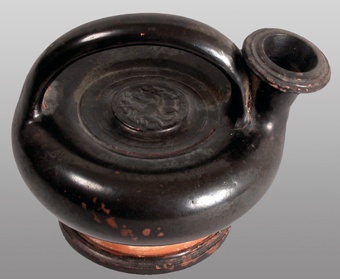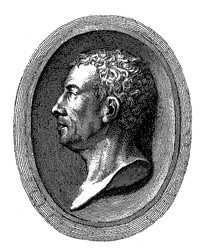Der Askos diente in erster Linie als Behältnis für Öl. Mit duftenden Ölen gefüllt, fanden Askoi nicht nur in der Kosmetik, sondern auch im Grabkult Verwendung.
Über den doppelt profilierten Standring setzt sich der tongrundige Fuß ab, auf dem der flache bauchige Gefäßkörper ruht. Im Unterschied zum Guttus führt beim Askos ein Bügelhenkel von der Schulter direkt zum Hals bzw. zum Ausguß. Die enge Tülle weitet sich zu einer profilierten Mündung.
Das von einem profilierten Rand umgebene Reliefbild im Zentrum des flachen Gefäßkörpers zeigt Bellerophon, der auf seinem geflügelten Roß Pegasos die Chimaira jagt.
Der Askos wird in das 2. Viertel 4. Jh. v. Chr. datiert.
en

